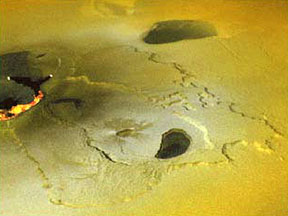This shows an active volcanic region on Io. The yellow and orange area is newly formed lava, and the dark areas show lava that has cooled down.
Click on image for full size
Courtesy of NASA
Galileo Finds More Volcanoes on Io
News story originally written on June 2, 2000
The Galileo spacecraft photographed volcanoes on the surface of Io, one of Jupiter's moons. Scientists believe there are at least 300 volcanoes on the moon. These volcanoes are somewhat different than those on Earth. The small ones can erupt and then quickly turn dorment in weeks. Other ones stay active for many years at a time.
Last month, Galileo spotted large clouds of sulfur gas in the atmosphere and yellow snow. Galileo will continue to study Jupiter and its satellites, turning next to the moon Ganymede and Jupiter's Great Red Spot.
You might also be interested in:
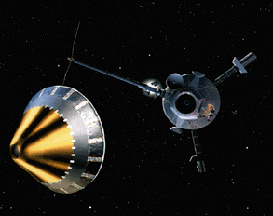
The Galileo spacecraft was launched on October 19, 1989. Galileo had two parts: an orbiter and a descent probe that parachuted into Jupiter's atmosphere. Galileo's main mission was to explore Jupiter and
...more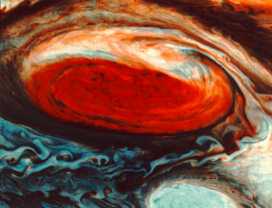
The Great Red Spot is thought to be a hurricane which has been raging on Jupiter for at least 400 years. The connected page shows an image of the Great Red Spot next to Tropical Storm Emily for comparison.
...more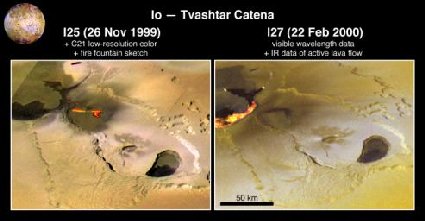
The Galileo spacecraft was launched in October 1989. So, Galileo has been in space more than 10 years and it has been orbiting Jupiter for more than five years. Galileo is still going strong! "We're proud
...more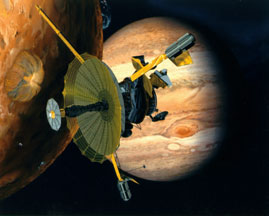
The Galileo spacecraft has finally reached the end of its road. Galileo has been orbiting Jupiter since 1995. On September 21, 2003, Galileo will dive into Jupiter's atmosphere and burn up. This crash
...more
It was another exciting and frustrating year for the space science program. It seemed that every step forward led to one backwards. Either way, NASA led the way to a great century of discovery. Unfortunately,
...more
The Space Shuttle Discovery lifted off from Kennedy Space Center on October 29th at 2:19 p.m. EST. The weather was great as Discovery took 8 1/2 minutes to reach orbit. This was the United States' 123rd
...more
A moon was discovered orbiting the asteroid, Eugenia. This is only the second time in history that a satellite has been seen circling an asteroid. A special mirror allowed scientists to find the moon
...more


